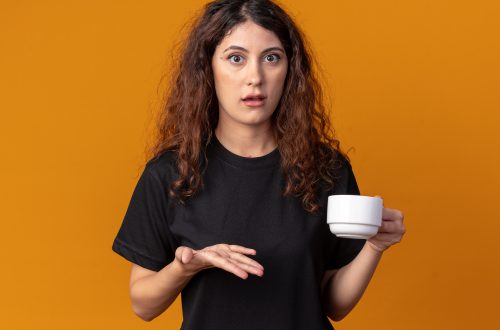7 Things of What to Look for When Buying Coffee
Please note that some links may be affiliate links from which we may earn a commission. This is at no extra cost to you and keeps The Coffee Suite running. Thank you.
You may be totally happy always having the same coffee day in and day out, or you might just not know what to look for when buying coffee. But, you could be missing out! How do you know it is the best coffee you could be having if you’ve never experienced the taste of freshly ground coffee from good quality coffee beans. Well, you might just be in for a treat.
Freshly ground coffee is rarely found on the grocery store shelves so if that is your go to I really recommend you branching out and taking a look at these 7 things to look for when buying coffee.
What to look for when buying great coffee
Trying different coffees will not only broaden your horizons but expose you to flavors that you never knew existed! There is such a diverse range of coffees to try, each with their own flavor profiles and each uniquely different. In this article we’re going to show you what to look for when buying coffee.
1. Coffee Beans vs Ground Coffee
By using coffee beans you are virtually guaranteed fresher tasting coffee than ground coffee that might have been ground months ago. The ideal time to grind your own coffee beans at home is a few days to around 2 – 3 weeks after they have been roasted. After this timeframe, coffee starts to decline, losing it’s flavor and aroma.
This is because, in those first few weeks after roasting, coffee goes through a process of ‘degassing’. This is when the carbon dioxide produced during roasting is released. Once the carbon dioxide has dissipated, the beans will be at their most flavorful.
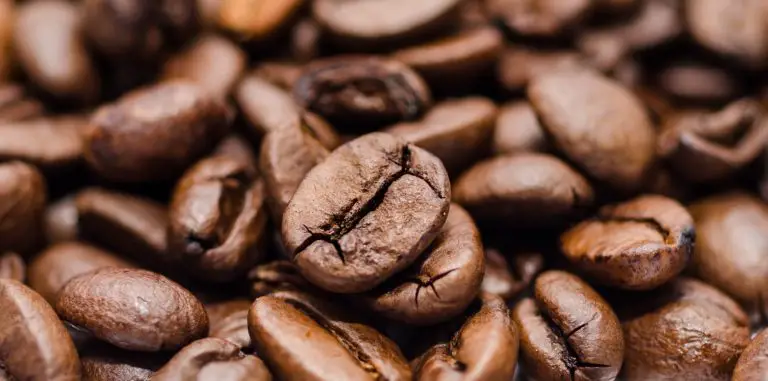
2. Packaging
Have you ever wondered why coffee bags have a small opening on them? And no, it’s not for you to smell that amazing aroma, as delicious as it is! The valve is a one way system that allows the carbon dioxide that has built up after roasting to escape. These bags are perfectly good as long as they are properly sealed and airtight.
Foil lined bags are great at keeping the coffee beans fresh however no matter which packaging you purchase, the main thing to look out for is whether or not the bag is airtight. If it is not then the beans will not be as fresh as they could be.
Once purchased, if you aren’t able to reseal a bag completely after opening then you want to decant coffee into an airtight container, preferably with a rubber seal on the inside to keep air out. Another option would be to use a strong coffee bag clip.
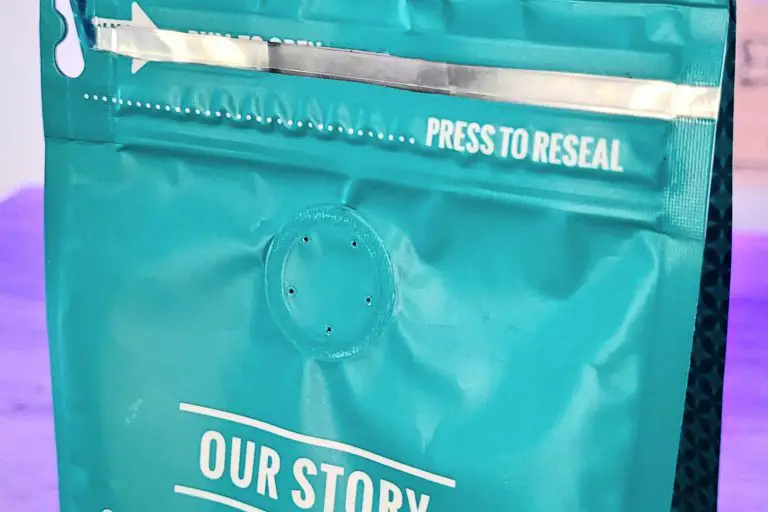
3. Roast Date
You can check how fresh your coffee is by looking at the roasting date on a bag of coffee. Now this may not be shown on grocery store coffee bag because they do not want you to know how ‘unfresh’ it is! What they do however, is supply a best before date that whilst telling us how long the coffee should remain ‘fresh’ for, makes it really hard to know just how old the coffee is.
If that isn’t enough to put to persuade you from trying recently roasted coffee, think how long the coffee takes from the time it is roasted, packaged, sent to distribution centres and then waiting to be stacked on shelves in various grocery stores around the country. And that’s typically even before it’s been placed BEHIND the coffee still on the store’s shelves.
Your best bet is to find coffee that actually has a roasting date on the packaging. Good examples of this may be your local coffee shop, specialty coffee shops or reputable online coffee sellers such as Lifeboost, who roast on ordering.
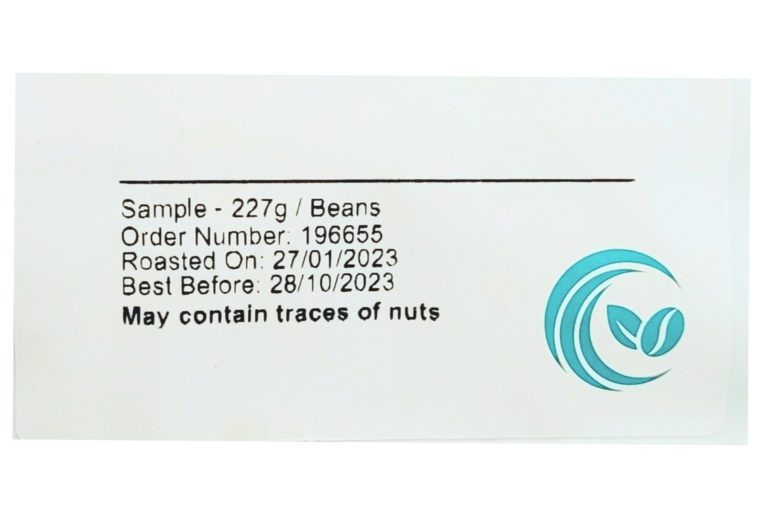
Related article:
4. Roast Type
If a bag of coffee does not state that it is a dark roast, then it can be assumed that it is a light to medium roast. In terms of grocery store coffee, this is usually indicated by ‘strength’. The higher the strength, the darker the roast.
As you may already be aware, the lighter the roast the less bitter (more acidic) and the darker the roast, the more bitter (less acidic) the coffee will taste. (This is due to more acids being burned away the longer the coffee beans are roasted.)
Therefore, knowing what type of coffee you enjoy, will help you know which roast to buy. Usually lighter roasted coffees tend to have more of a floral or fruity flavor. Darker roasted coffees are more creamy with more caramel and treacle flavor profiles.
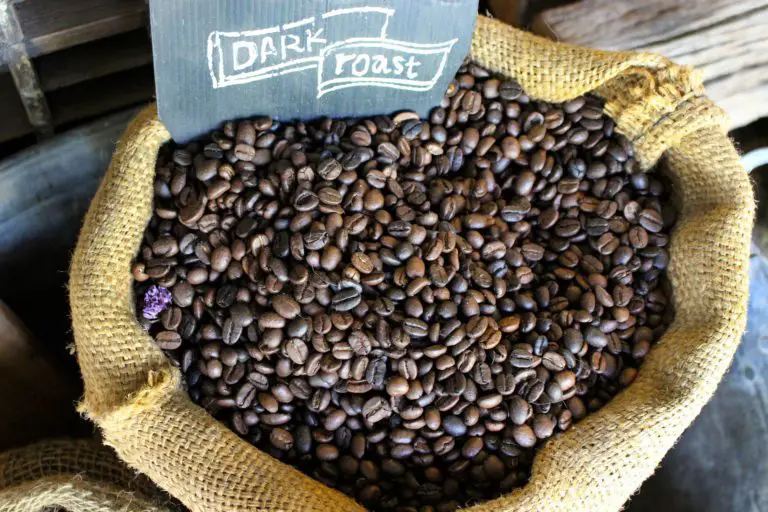
5. Adding milk?
If you like milk in your coffee, be it dairy or plant based, you would be better off choosing a more acidic coffee. This is because milk is an alkali and will tone down the acidity of coffee when added.
By choosing a more acidic coffee you are compensating for the addition of milk. This is in fact what a lot of coffee shops do as they know that a large proportion of their customers like milk with their coffee.
Related article:
6. Ethics
If ethical farming and sustainability are important to you then look for coffees that have the following certifications:
Fair Trade – This ensures a fair deal to farmers and farm workers and sees them retaining more profits for themselves and their families. It ensures that they are not exploited by those who want quality products at the lowest price possible.
Rainforest Alliance – Ensure the protection of rainforests that everyone, including the livelihoods of farmers, rely on. In addition, it also helps to protect the livelihoods of the farmers and their workers.
There are guidelines in three sustainability areas that products with a Rainforest Alliance certification need to adhere to. They are environmental, social and economic. This means that they will need to be assessed on how well they conform to the requirements of the Rainforest Allowance in all three areas.
USDA Organic – This certification means that coffee growers use only natural methods to grow their coffee. This includes natural fertilizers and excludes chemicals which means that the coffee they produce is only better for the environment but for consumers too.
Shade Grown Coffee – Trees provide a canopy under which coffee can grow. These trees provide habitats and feeding grounds for insects, birds and other animals. Therefore growers pledge that their coffee farming is not invasive and disruptive to the surrounding natural environment.
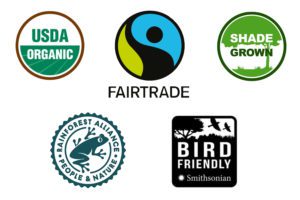
7. Coffee bean origin
Knowing where the coffee you are buying has been produced can make a difference as to the type of coffee you’re likely to enjoy.
For example, if you prefer enjoy a medium-bodied coffee with fruity and floral tones that’s more on the acidic side, you might like coffee that’s been grown in Yirgacheffe in Ethiopia as this is the type of coffee this area produces.
If you prefer a full-bodied coffee that is spicy yet sweet in flavor and less acidic coffee from El Salvador’s volcanic region would hit the spot.
If it is not stated on the packaging where the coffee has originated then your guess is as good as ours! Traceability means you know exactly what you’re getting and your coffee is unlikely to a blend of coffees, some of which may be of a sub-par standard.
So there you have it!
Hopefully now you know exactly what to look for when buying coffee.
What to look for in coffee summary:
1. Coffee beans are fresher than coffee grounds. A few days to 2-3 weeks after roasting is the ideal time to make coffee.
2. Make sure coffee comes in airtight packaging.
3. If there’s no roast date then there’s no telling how old the coffee really is.
4. If adding milk, choose a more acidic coffee as milk is an alkali and reduces the acidity.
5. Buying coffee products with certifications is better for both coffee farmers, the environment and ultimately you.
6. Knowing what region coffee is grown in helps determine the flavor notes you are likely to experience.
7. Knowing what type of coffee you enjoy will guide your roast choice:
Lighter Roasts
- More acidic
- Less bitter
- Light
- Floral and fruity notes
Darker Roasts
- Less acidic
- More bitter
- Creamy and rich
- Caramel, treacle, nut tones
Let us know if there’s anything else you look for when buying coffee that we haven’t mentioned and we’ll be sure to add it to our list.
You May Also Like

Coffee FAQ’s – Get Your Coffee Questions Answered
May 30, 2023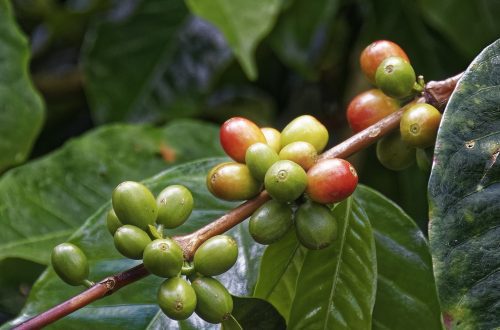
Where Do Coffee Beans Come From?
July 1, 2021